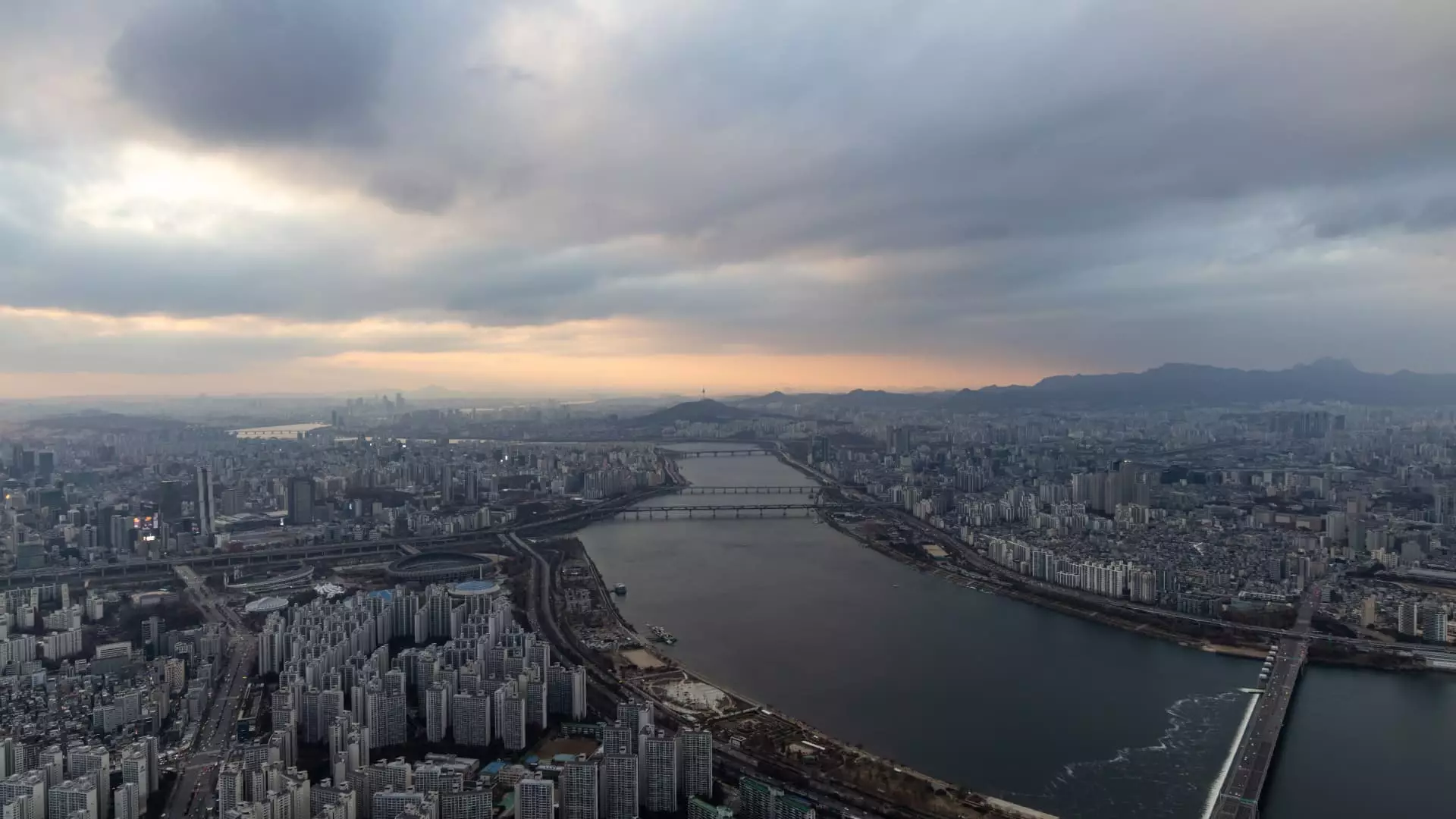South Korea, an economy often held as a beacon of resilience in the face of adversity, is now confronting troubling headwinds that threaten its stability. The revelation that South Korea’s GDP contracted by 0.1% year-on-year in the first quarter of 2025, according to initial estimates, is both shocking and revealing. It marks the first economic contraction since the dismal final quarter of 2020 and starkly deviates from a Reuters poll that had projected a modest growth of 0.1%. This isn’t merely a statistical anomaly but rather an indication of deeper vulnerabilities at play.
The alarming decline in GDP aligns with a dismal performance in the construction sector, which plummeted by a staggering 12.4% year on year. Such a dramatic downturn in construction signals not only immediate economic hardship but also casts serious doubts on the long-term sustainability of South Korea’s economic framework. In a rapidly evolving global marketplace, the ability to withstand shocks is paramount, and this contraction raises questions about the robustness of South Korea’s economic policies and strategies.
The Role of Political Turmoil
Political instability is a significant factor exacerbating South Korea’s economic woes. The ongoing impeachment trials of former President Yoon Suk Yeol and Prime Minister Han Duck-soo have created a chaotic atmosphere that undermines investor confidence and stifles economic activity. The sole semblance of stability came from the Constitutional Court’s decision to reinstate Han, yet even this development creates uncertainty in governance. With the country gearing up for elections on June 3, the impending changes in leadership further compound the question marks hovering over policy direction and economic initiatives.
In such an atmosphere, it is no surprise that domestic demand and exports are faltering. The Bank of Korea (BOK) had previously hinted at dismal growth projections, downgrading its expectations for GDP growth in 2025 from 1.5% to even lower figures. It becomes increasingly evident that without decisive action and coherent leadership, South Korea risks veering down a path of stagnation, potentially sabotaging its long-standing commitments to economic progress.
Global Trade Tensions and Domestic Repercussions
The international economic landscape adds another layer of complexity. The escalations in global trade tensions, particularly the lingering effects of the trade war with the United States, have left South Korea particularly vulnerable. While the recent suspension of certain tariffs by U.S. President Trump offered a glimmer of hope, South Korea still grapples with a hefty 25% tariff on vital exports such as steel and automobiles. The implication is clear: a nation that has built its wealth on exports now finds itself at the mercy of foreign policies and negotiations that may not always align with its interests.
Moreover, the looming trade discussions between South Korea and the United States have become critically important. The lack of a conclusive trade deal could further jeopardize Korean economies, as the new government—which will be installed shortly after the June elections—will inevitably influence future negotiations. The stakes are immeasurably high, illustrating that the intertwined fates of global and local economies are more tenuous than ever.
The Bank of Korea’s Dilemma
As South Korea grapples with stagnation, the BOK faces an uphill battle in navigating monetary policy from a precarious position. While some analysts, like Jeff Ng of Sumitomo Mitsui Banking Corporation, foresee additional cuts in interest rates as an immediate response to the downturn, this may merely serve as a bandage rather than a solution. The expectation is for aggressive policy revisions, including two to three further rate cuts and fiscal stimuli exceeding 1% of GDP.
Yet, a fundamental question looms: will such measures be sufficient to revive the economy in the face of persistent domestic challenges and global uncertainties? The BOK’s dilemma is telling—it must balance short-term alleviation with long-term structural reforms. If the political landscape remains fraught with turmoil, any monetary or fiscal measures taken may not garner the desired outcomes.
The current state of South Korea’s economy provides a sobering reminder that resilience requires more than just robust GDP figures; it rests fundamentally on stable governance and clear policy direction. With the confluence of political instability, trade tensions, and economic contraction, South Korea stands at a crossroads. The choices made in the ensuing months will have profound implications, not just for economic indicators, but for the very fabric of society. The message is clear: navigate these treacherous waters wisely, for missteps could plunge the nation further into uncertainty.

